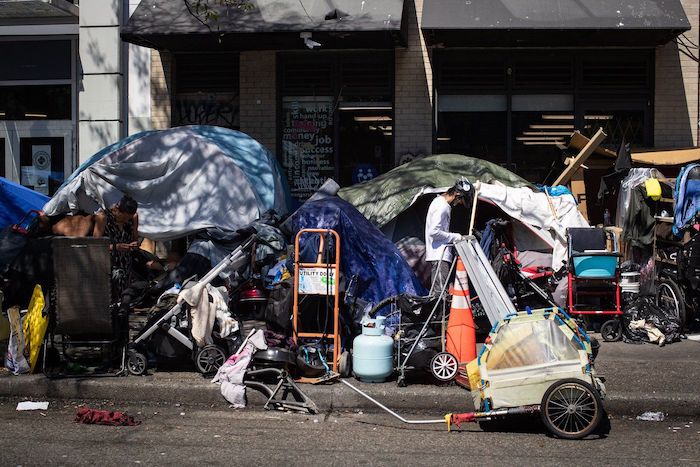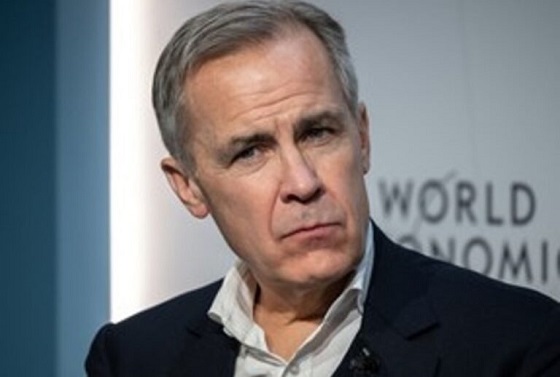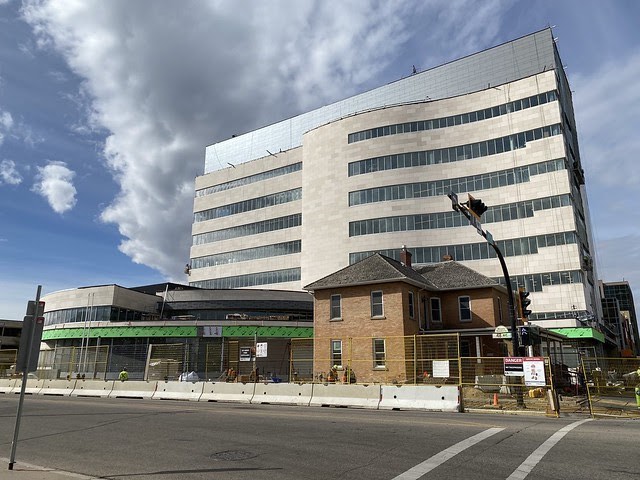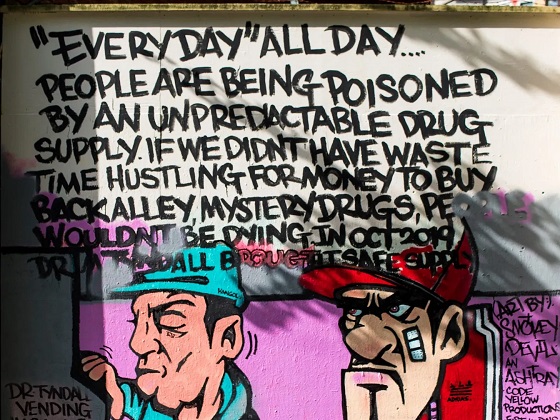Uncategorized
Official: Sri Lanka failed to heed warnings of attacks

COLOMBO, Sri Lanka — Sri Lankan officials failed to heed warnings from intelligence agencies about the threat of an attack by a domestic radical Muslim group that officials blame for Easter Sunday bombings which killed more than 200 people, the country’s health minister said Monday.
The
International intelligence agencies warned of the attacks several times starting April 4, Senaratne said. On April 9, the
It was not immediately clear what action, if any, was taken in response. Authorities said little was known about the group except that its name had appeared in intelligence reports.
Shortly after Senaratne spoke to reporters, a van parked near one of the bombed churches, St. Anthony’s Shrine in Colombo, exploded, sending pedestrians fleeing in panic. While inspecting it, police found three bombs they attempted to defuse but that instead detonated. No injuries were reported.
Also on Monday, police found 87 detonators near Colombo’s main bus depot, officials said. They declined to comment on whether they were linked to Sunday’s attacks.
Because of political dysfunction within the government, Seranatne said, Prime Minister Ranil Wickremesinghe and his Cabinet were kept in the dark about the intelligence until after the attacks.
President Maithrela Sirisena, who was out of the country at the time of the attacks, ousted Wickremesinghe in late October and dissolved the Cabinet. The Supreme Court eventually reversed his actions, but the prime minister has not been allowed into meetings of the Security Council since October.
All of the bombers were Sri Lankan citizens, but authorities suspect foreign links, Senaratne said.
Earlier, Ariyananda Welianga, a government forensic crime investigator, said an analysis of the attackers’ body parts made clear that they were suicide bombers. He said most of the attacks were carried out by individual bombers, with two at Colombo’s Shangri-La Hotel.
The bombings, Sri Lanka’s deadliest violence since a devastating civil war that ended a decade ago, killed at least 290 people with more than 500 wounded, police spokesman Ruwan Gunasekara said.
Two other government ministers also alluded to intelligence failures. Telecommunications Minister Harin Fernando tweeted: “Some intelligence officers were aware of this incidence. Therefore there was a delay in action. Serious action needs to be taken as to why this warning was ignored.” He said his father had heard of a possible attack as well and had warned him not to enter popular churches.
Mano Ganeshan, the minister for national integration, said his ministry’s security officers had been warned by their division about the possibility that two suicide bombers would target politicians.
Cardinal Malcolm Ranjith, the archbishop of Colombo, said the attacks could have been thwarted.
“We placed our hands on our heads when we came to know that these deaths could have been avoided. Why this was not prevented?” he said.
Earlier,
In the civil war, the Tamil Tigers, a powerful rebel army known for its use of suicide bombers, was crushed by the government in 2009, and had little history of targeting Christians. While anti-Muslim bigotry has swept the island in recent years, fed by Buddhist nationalists, the island also has no history of violent Muslim militants. The country’s small Christian community has seen only scattered incidents of harassment in recent years.
The explosions — mostly in or around Colombo, the capital — collapsed ceilings and blew out windows, killing worshippers and hotel guests in one scene after another of smoke, soot, blood, broken glass, screams and wailing alarms.
A morgue worker in the town of Negombo, outside Colombo, where St. Sebastian’s Church was targeted, said many bodies were hard to identify because of the extent of the injuries. He spoke on condition of anonymity.
Nilantha Lakmal, a 41-year-old businessman in Negombo, went with his family to St. Sebastian’s for Easter Mass. He said they all escaped the blast unscathed, but he remains haunted by images of bodies being taken from the sanctuary and tossed into a truck.
At the Shangri-La Hotel, a witness said “people were being dragged out” after the blast.
“There was blood everywhere,” said Bhanuka Harischandra, a 24-year-old from Colombo and founder of a tech marketing company. He was heading to the hotel for a meeting when it was bombed. “People didn’t know what was going on. It was panic mode,” he said.
Most of those killed were Sri Lankans. But the three bombed hotels and one of the churches, St. Anthony’s Shrine, are frequented by foreign tourists, and the ministry of tourism said 39 foreigners from a variety of countries were killed.
The U.S. said “several” Americans were among the dead, while Britain, India, China, Japan and Portugal said they, too, lost citizens.
The streets were largely deserted Monday afternoon, with most shops closed and a heavy deployment of soldiers and police. Stunned clergy and onlookers gathered at St. Anthony’s Shrine, looking past the soldiers to the stricken church.
The Sri Lankan government initially lifted a curfew that had been imposed during the night but reinstated it Monday afternoon. Most social media remained blocked Monday after officials said they needed to curtail the spread of false information and ease tension in the country of about 21 million people.
Prime Minister Wickremesinghe said he feared the massacre could trigger instability, and vowed to “vest all necessary powers with the
The scale of the bloodshed recalled the worst days of the civil war, when the Tamil Tigers, from the ethnic Tamil minority, sought independence from the Sinhalese-dominated country. The Sinhalese are largely Buddhist. The Tamils are Hindu, Muslim and Christian.
Sri Lanka, off the southern tip of India, is about 70% Buddhist. In recent years, tensions have been running high between hard-line Buddhist monks and Muslims.
Two Muslim groups in Sri Lanka condemned the church attacks, as did countries around the world, and Pope Francis expressed condolences at the end of his traditional Easter Sunday blessing in Rome.
Six nearly simultaneous blasts took place in the morning at the shrine and the Cinnamon Grand, Shangri-La and Kingsbury hotels in Colombo, as well as at two churches outside Colombo.
A few hours later, two more blasts occurred just outside Colombo, one at a guesthouse where two people were killed, the other near an overpass, Atapattu said.
Also, three police officers were killed during a search at a suspected safe house on the outskirts of Colombo when its occupants apparently detonated explosives to prevent arrest, authorities said.
Authorities said a large bomb had been found and defused late Sunday on an access road to the international airport.
Air Force Group Captain Gihan Seneviratne said Monday that authorities found a pipe bomb filled with 50 kilograms (110 pounds) of explosives. It was large enough to have caused damage in a 400-meter (400-yard) radius, he said.
Harischandra, who witnessed the attack at the Shangri-La Hotel, said there was “a lot of tension” after the bombings, but added, “We’ve been through these kinds of situations before.”
He said Sri Lankans are “an amazing bunch” and noted that his social media feed was flooded with photos of people standing in long lines to give blood.
___
Associated Press journalists Gemunu Amarasinghe in Negombo, Sri Lanka, Rishabh Jain in Colombo and Sheila Norman-Culp in London contributed to this report.
Bharatha Mallawarachi And Krishan Francis, The Associated Press
Uncategorized
Poilievre on 2025 Election Interference – Carney sill hasn’t fired Liberal MP in Chinese election interference scandal
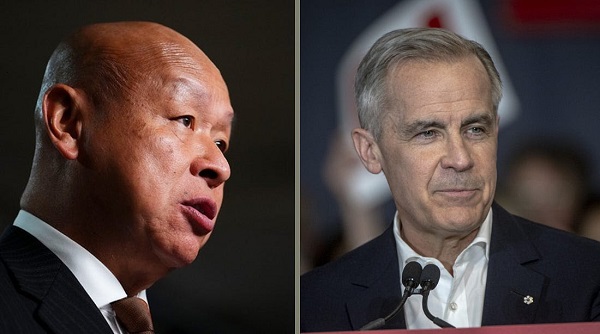
From Conservative Party Communications
“Yes. He must be disqualified. I find it incredible that Mark Carney would allow someone to run for his party that called for a Canadian citizen to be handed over to a foreign government on a bounty, a foreign government that would almost certainly execute that Canadian citizen.
“Think about that for a second. We have a Liberal MP saying that a Canadian citizen should be handed over to a foreign dictatorship to get a bounty so that that citizen could be murdered. And Mark Carney says he should stay on as a candidate. What does that say about whether Mark Carney would protect Canadians?
“Mark Carney is deeply conflicted. Just in November, he went to Beijing and secured a quarter-billion-dollar loan for his company from a state-owned Chinese bank. He’s deeply compromised, and he will never stand up for Canada against any foreign regime. It is another reason why Mr. Carney must show us all his assets, all the money he owes, all the money that his companies owe to foreign hostile regimes. And this story might not be entirely the story of the bounty, and a Liberal MP calling for a Canadian to be handed over for execution to a foreign government might not be something that the everyday Canadian can relate to because it’s so outrageous. But I ask you this, if Mark Carney would allow his Liberal MP to make a comment like this, when would he ever protect Canada or Canadians against foreign hostility?
“He has never put Canada first, and that’s why we cannot have a fourth Liberal term. After the Lost Liberal Decade, our country is a playground for foreign interference. Our economy is weaker than ever before. Our people more divided. We need a change to put Canada first with a new government that will stand up for the security and economy of our citizens and take back control of our destiny. Let’s bring it home.”
Uncategorized
Canada Needs A Real Plan To Compete Globally
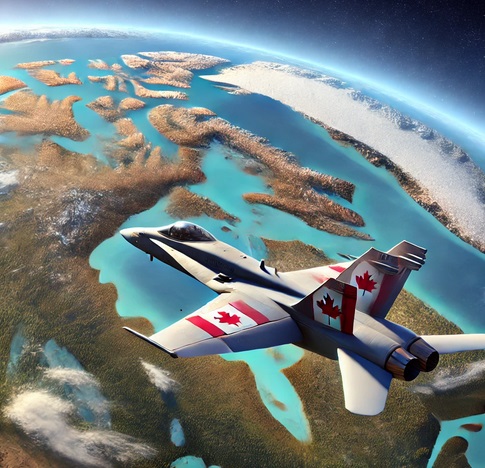
From the Frontier Centre for Public Policy
Ottawa’s ideological policies have left Canada vulnerable. Strategic action is needed now
As Canada navigates an increasingly complex geopolitical landscape, the next federal government must move beyond reflexive anti—Americanism regardless of its political leanings. Instead, Canada should prioritize national interests while avoiding unnecessary conflict and subservience.
The notion that Canada can stand alone is as misguided as the idea that it is only an economic appendage of the United States. Both perspectives have influenced policy in Ottawa at different times, leading to mistakes.
Rather than engaging in futile name-calling or trade disputes, Canada must take strategic steps to reinforce its autonomy. This approach requires a pragmatic view rooted in Realpolitik—recognizing global realities, mitigating risks, governing for the whole country, and seizing opportunities while abandoning failed ideologies.
However, if Washington continues to pursue protectionist measures, Canada must find effective ways to counteract the weakened position Ottawa has placed the country in over the past decade.
One key strategy is diversifying trade relationships, notably by expanding economic ties with emerging markets such as India and Southeast Asia. This will require repairing Canada’s strained relationship with India and regaining political respect in China.
Unlike past Liberal trade missions, which often prioritized ideological talking points over substance, Canada must negotiate deals that protect domestic industries rather than turning summits into platforms for moral posturing.
A more effective approach would be strengthening partnerships with countries that value Canadian resources instead of vilifying them under misguided environmental policies. Expand LNG exports to Europe and Asia and leverage Canada’s critical minerals sector to establish reciprocal supply chains with non-Western economies, reducing economic reliance on the U.S.
Decades of complacency have left Canada vulnerable to American influence over its resource sector. Foreign-funded environmental groups have weakened domestic energy production, handing U.S. industries a strategic advantage. Ottawa must counter this by ensuring Canadian energy is developed at home rather than allowing suppressed domestic production to benefit foreign competitors.
Likewise, a robust industrial policy—prioritizing mining, manufacturing, and agricultural resilience—could reduce dependence on U.S. and Chinese imports. This does not mean adopting European-style subsidies but rather eliminating excessive regulations that make Canadian businesses uncompetitive, including costly domestic carbon tariffs.
Another key vulnerability is Canada’s growing military dependence on the U.S. through NORAD and NATO. While alliances are essential, decades of underfunding and neglect have turned the Canadian Armed Forces into little more than a symbolic force. Canada must learn self-reliance and commit to serious investment in defence.
Increasing defence spending—not to meet NATO targets but to build deterrence—is essential. Ottawa must reform its outdated procurement processes and develop a domestic defence manufacturing base, reducing reliance on foreign arms deals.
Canada’s vast Arctic is also at risk. Without continued investment in northern sovereignty, Ottawa may find itself locked out of its own backyard by more assertive global powers.
For too long, Canada has relied on an economic model that prioritizes federal redistribution over wealth creation and productivity. A competitive tax regime—one that attracts investment instead of punishing success—is essential.
A capital gains tax hike might satisfy activists in Toronto, but it does little to attract investments and encourage economic growth. Likewise, Ottawa must abandon ideological green policies that threaten agri-food production, whether by overregulating farmers or ranchers. At the same time, it must address inefficiencies in supply management once and for all. Canada must be able to feed a growing world without unnecessary bureaucratic obstacles.
Ottawa must also create an environment where businesses can innovate and grow without excessive regulatory burdens. This includes eliminating interprovincial trade barriers that stifle commerce.
Similarly, Canada’s tech sector, long hindered by predatory regulations, should be freed from excessive government interference. Instead of suffocating innovation with compliance mandates, Ottawa should focus on deregulation while implementing stronger security measures for foreign tech firms operating in Canada.
Perhaps Ottawa’s greatest mistake is its knee-jerk reactions to American policies, made without a coherent long-term strategy. Performative trade disputes with Washington and symbolic grandstanding in multilateral organizations do little to advance Canada’s interests.
Instead of reacting emotionally, Canada must take proactive steps to secure its economic, resource, and defence future. That is the role of a responsible government.
History’s best strategists understood that one should never fight an opponent’s war but instead dictate the terms of engagement. Canada’s future does not depend on reacting to Washington’s policies—these are calculated strategies, not whims. Instead, Canada’s success will be determined by its ability to act in the interests of citizens in all regions of the country, and seeing the world as it is rather than how ideological narratives wish it to be.
Marco Navarro-Génie is the vice president of research at the Frontier Centre for Public Policy. With Barry Cooper, he is co-author of Canada’s COVID: The Story of a Pandemic Moral Panic (2023).
-
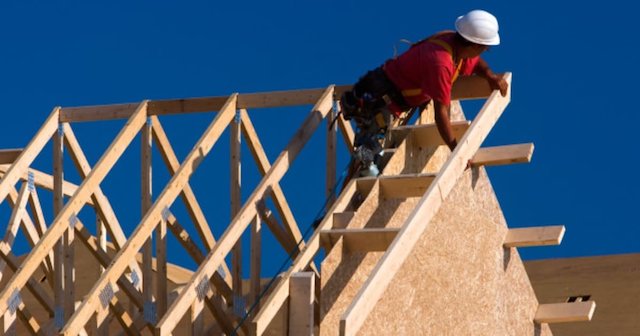
 Alberta9 hours ago
Alberta9 hours agoGovernments in Alberta should spur homebuilding amid population explosion
-

 Automotive1 day ago
Automotive1 day agoCanadians’ Interest in Buying an EV Falls for Third Year in a Row
-

 Entertainment2 days ago
Entertainment2 days agoPedro Pascal launches attack on J.K. Rowling over biological sex views
-
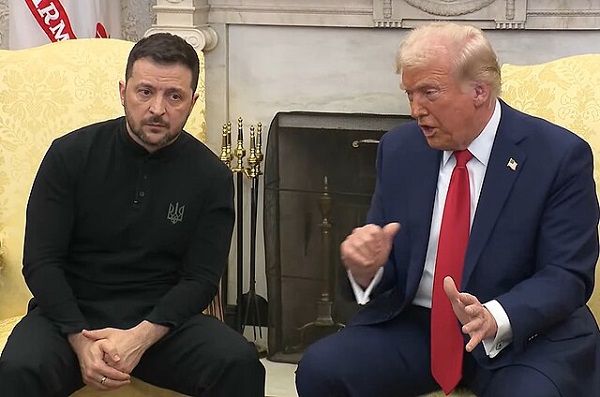
 conflict2 days ago
conflict2 days agoTrump tells Zelensky: Accept peace or risk ‘losing the whole country’
-

 Alberta8 hours ago
Alberta8 hours agoLow oil prices could have big consequences for Alberta’s finances
-
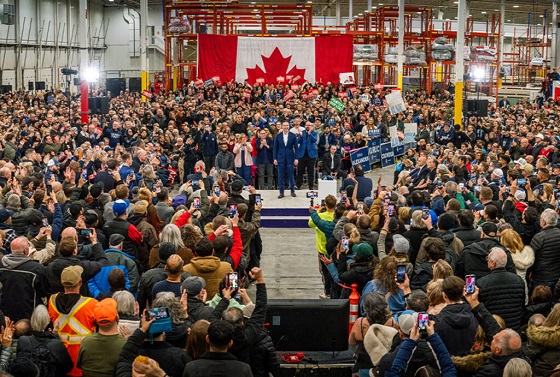
 2025 Federal Election1 day ago
2025 Federal Election1 day agoPoilievre Campaigning To Build A Canadian Economic Fortress
-
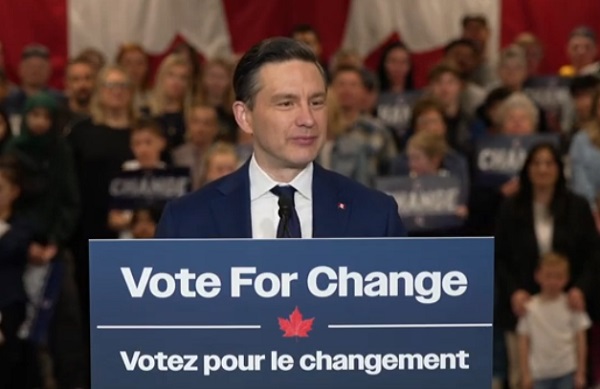
 2025 Federal Election1 day ago
2025 Federal Election1 day agoAs PM Poilievre would cancel summer holidays for MP’s so Ottawa can finally get back to work
-
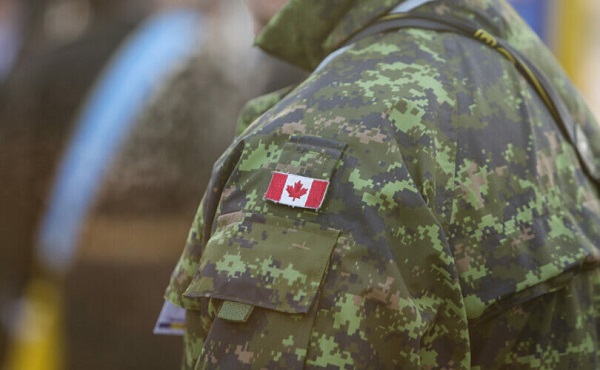
 armed forces20 hours ago
armed forces20 hours agoYet another struggling soldier says Veteran Affairs Canada offered him euthanasia
